Production of coffee seedlings in the Coffee Farm 4D | Step by step
In the annual agronomic activities of a coffee plantation, the renewal of the coffee plants must be included, which for many different reasons we lose in our farms. There are many factors by which a coffee plant can die, by disease, by crushing when a shade tree falls or even by being devoured by a pack animal such as a mule or an ass. This has as a consequence a reduction in productivity and a decrease in the income of coffee families. This is why renewing coffee becomes a necessity and the best way to do it is by making their seedlings nurseries within the same coffee farm.
Also, as a business it is an option, which has many people who do not have the time or space to make a coffee nursery and sell it in need of obtaining it to the seedling producers. That is why in this publication I want to show my experience in the production of coffee seedlings, photos of the drink of my country, in my country Venezuela.
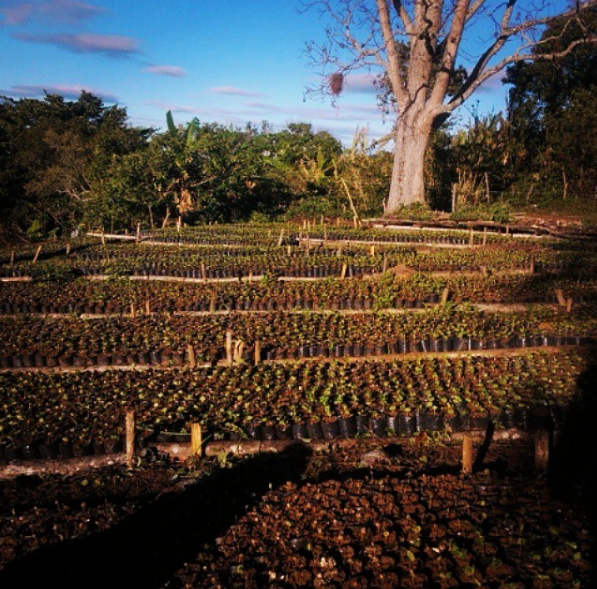
To start you must know what you are doing a coffee nursery, if it is to market them, to renew or to start your own plantation. If it is for your farm, you must also know what your focus is on the coffee activity, if it is high productivities with an average quality of the final product or if your focus is high quality, something that is booming, in the third call wave of coffee. From here we can decide what kind of seed to get. In my case, I inherited a hacienda with old plants of pure varieties, such as Typica variety coffee and Buorbon, which produces me very good coffees, which, along with a good profit, I get high quality coffees with high demand from the connoisseurs of the subject of special coffees of my country. But the productivity was very low due to the disease known as coffee tree rust, which defoliated the silver and leads to a state of weakening, which if we do not act immediately with proper treatment, causes the death of the affected plants. This increases our annual expenses in the plantation, so we decided to produce plants resistant to the disease.
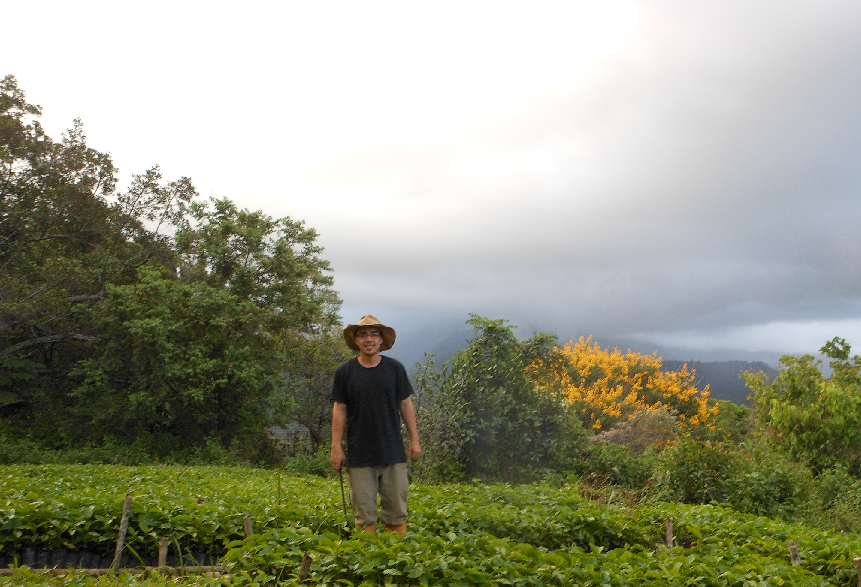
So we decided to acquire certified seed of Catimor variety. That will produce a plant resistant to coffee rust and very high productivity, approximately 60 qq per hectare. Then already on the farm we made the germinators, approximately 1x1 meter long for kg of seed, of this kg of seed we will obtain approximately 2300 coffee seedlings. To make the germinator sifted river sand disinfected with Trichoderma harzianum is used. Something that we have as a habit is to use friendly products with the environment, that is, mostly organic and biological inputs.
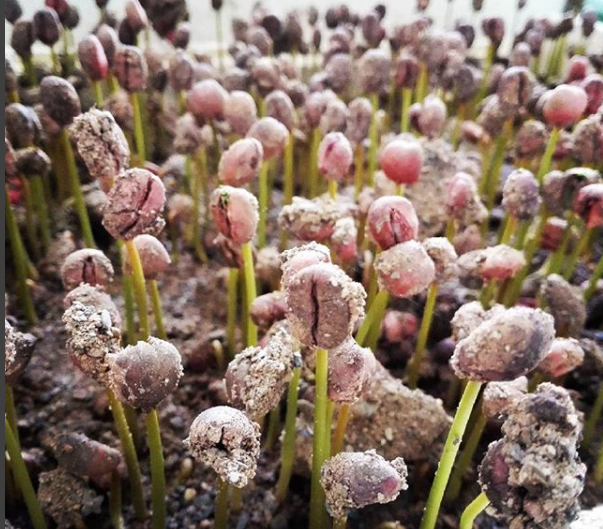
45 days after planting our seed in the germinator, the first visible structures of the plant begin to emerge. form of phosphor stick and that is why it is known as fosforitos (in local vocabulary), a few days later, these phosphorites emit the first pair of false leaves or cotyledons that give the name to this state of chapolas. In either of these two states you can perform the transplant to the nursery bag, which I recommend using the 2 kg (17x22cm) so that the roots have enough space to grow and not roll (called marrano root problem) what It would cause future growth problems. In the 45 days that the plant lasts to germinate, we clean and level the land where we will start filling the nursery bags. We will use a mixture of mountain soil, sand and compost to fill our nursery bags, all sifted and disinfected with trichoderma before transplanting the chapolas.
All this activity should start in December or January (in Venezuela), to achieve an adequate size for planting in the month of greatest precipitation, which in my area is August, this is about 8 months after planting. Many recommend starting the planting much earlier, preferably in November to plant in June-July and thus take advantage of the entire rainy season, in order to achieve early growth and harvest, approximately 18 months later with good agronomic management. But in my area it is difficult to obtain seeds on this date, as the cherries are only beginning to ripen in November, to harvest the first days of December.
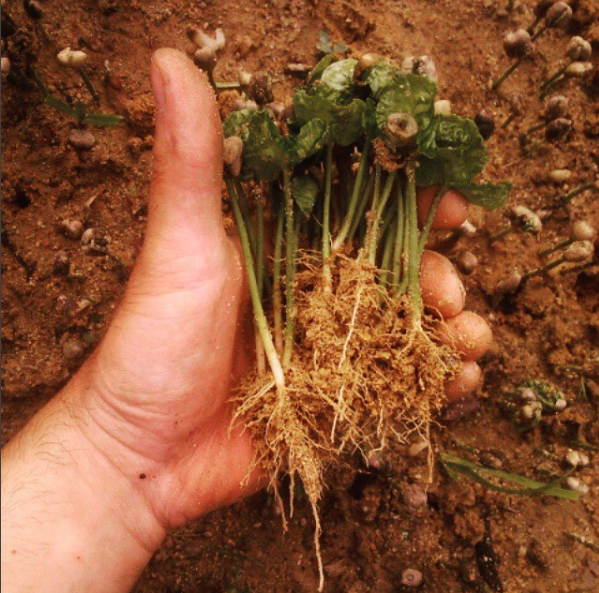
Once the seedlings have been transplanted, you should apply organic foliar fertilizer every 15 days, although it is advisable to apply solid DAP fertilizer at a rate of 3 gr per bag, I use the worm liquid humus which gave me an excellent result. Among the most frequent diseases is the disease of coffee hunger or Cercospora which is a fungus that attacks the leaves of the seedlings when it is weak due to the lack of nutrients, causing brown spots on the leaves that then fall naturally, paloteando our seedlings . This disease is common when we have high humidity and temperature, but its appearance commonly occurs when there are cochineals in the root of the seedling which prevents a normal feeding, which results in the weakening of this and an imminent attack of the fungus Cercospora. That is why he is told the disease of coffee hunger.
Another important point is the cleaning of the beds, weeding should be done every month, preferably by hand. There are those who use chemical pre-emergent herbicides, but as I mentioned, in our farm we only use ecological and organic methods. About 8 months later, we already have good plants with one or two pairs of branches, known as crosses. This is the time when the plant is suitable to be commercialized or planted in our farms, since at this point the reseeding can be done happily at the initiation of the new coffee plot.
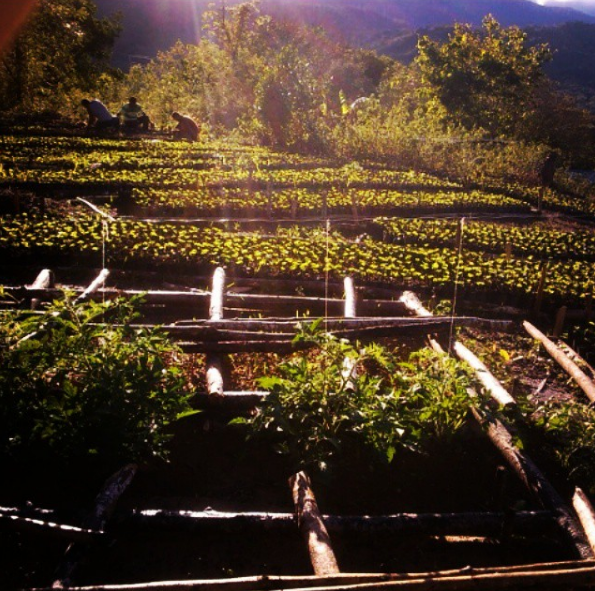
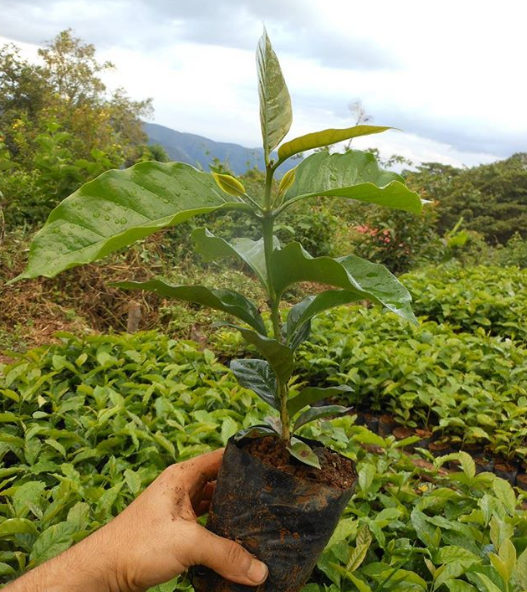
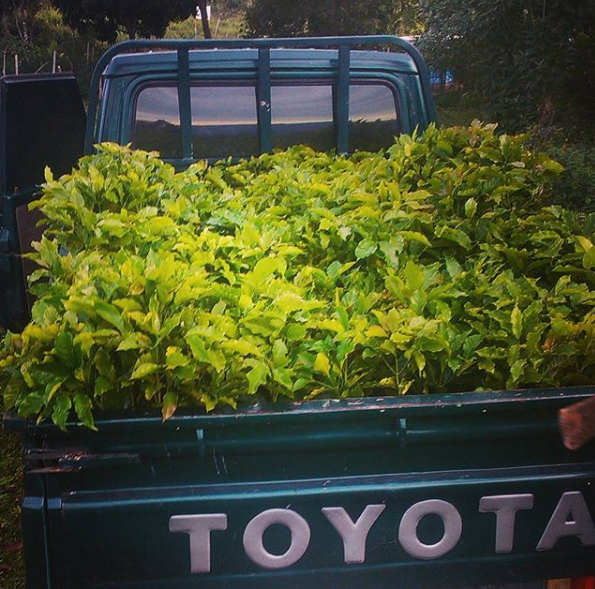
Thank you for reading my publication, this is all for today, if you want to learn more about coffee and chocolte, do not hesitate to follow me and make resteem to this publication, happy and blessed day!

Congratulations! This post has been upvoted from the communal account, @minnowsupport, by dlozada_3 from the Minnow Support Project. It's a witness project run by aggroed, ausbitbank, teamsteem, theprophet0, someguy123, neoxian, followbtcnews, and netuoso. The goal is to help Steemit grow by supporting Minnows. Please find us at the Peace, Abundance, and Liberty Network (PALnet) Discord Channel. It's a completely public and open space to all members of the Steemit community who voluntarily choose to be there.
If you would like to delegate to the Minnow Support Project you can do so by clicking on the following links: 50SP, 100SP, 250SP, 500SP, 1000SP, 5000SP.
Be sure to leave at least 50SP undelegated on your account.